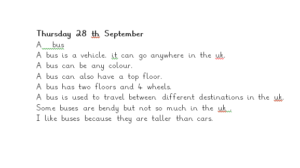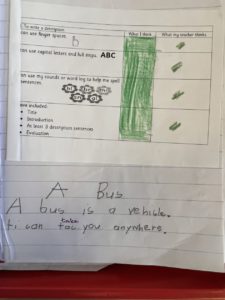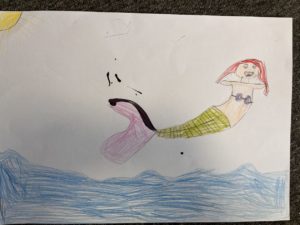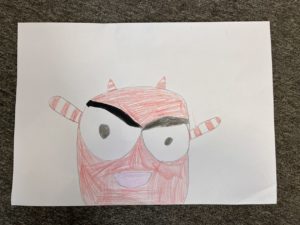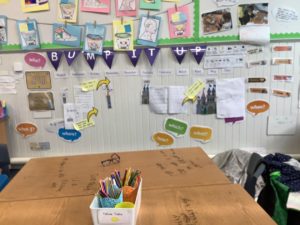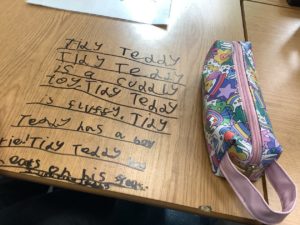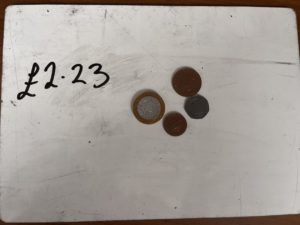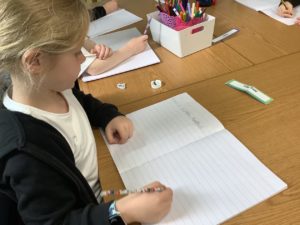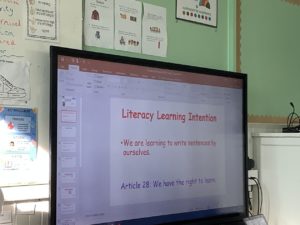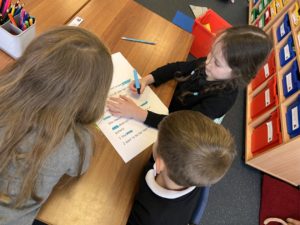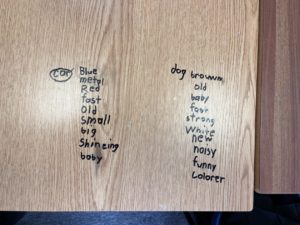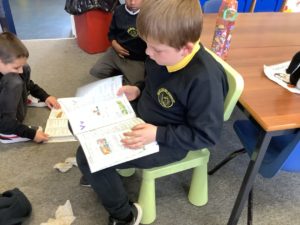Article 28: We have the right to learn.
This week we have been getting to know each other and we have done so well settling into our new routines. We have had opportunities to explore our new toys, talk about our likes and dislikes and we created our Class Charter to help us follow our three School Rules, Ready, Respect and Safe. We will share a photo of our Charter when our display is completed along with the rules that we created together.
We have investigated Literacy and Numeracy Tools that we are going to use to support our learning.
In Literacy, we practised reading and writing Fry’s words and used different strategies. We read words on Fry’s word cards and used our knowledge of spelling rules and sounds to help us. We then wrote the words on the table with a white board pen. This was very exciting! We love using our tables as big white boards.

We also made Fry’s words and other words of our choice using magnetic letters and letter cubes. This learner was very proud that she remembered to spell “cheese” using the “ch and ee sounds.”

We also played a “Pop Corn Fry’s Words” game. This group are showing great teamwork and one learner identified this as an important skill we need to use when we play this game to help us be successful.

These learners challenged themselves when playing this word game. “We made up a game where we had to try and find cards that we can match to each other, like goat and cheese or hand and bag. It was fun!”

We enjoyed exploring the Numeracy Tools we have in our classroom. This amazing learner made a robot using the Numicon. She used addition strategies and could identify that she had made 28. This was her strategy:
“I started with 10, and then I added 6+6 which made 22. Then I added the two’s which made 28.”

The learner was then challenged to make a new robot using eights. She used six groups of 8 and shared that she “started on 8 and then kept adding 8 so I was counting on. I kept adding 8 until I counted them all and I realised I had 48.”

We investigated the Dienes materials and we started to recognise that they represent numbers. Some of us were counting in tens using the “tens rods” and some people made models and could talk about the numbers they used.

We explored the geo boards and used our curiosity to investigate different ways we can use this tool to support our learning. This learner was making patterns and numbers on her board.
Another learner also recognised that some “shapes were starting to come together” on her board. She could talk about how we could use the geo boards to help us learn more about shapes and identified that she has made circles, squares and triangles.

We enjoyed building and creating models with the tools to investigate and explore how we can use them. This learner built a tower and explained that this tool can be used to count, add and subtract. He also estimated that he had made the number 100 here because he had so many.

We explored the reckenrecks and knew that each reckenreck has 20 beads. This learner used eight reckenrecks and explained that she made 140. Her strategy was counting in 20’s. She was very focused when counting which is a very important skill.

We can’t wait to share more of our learning. What a brilliant first week!





